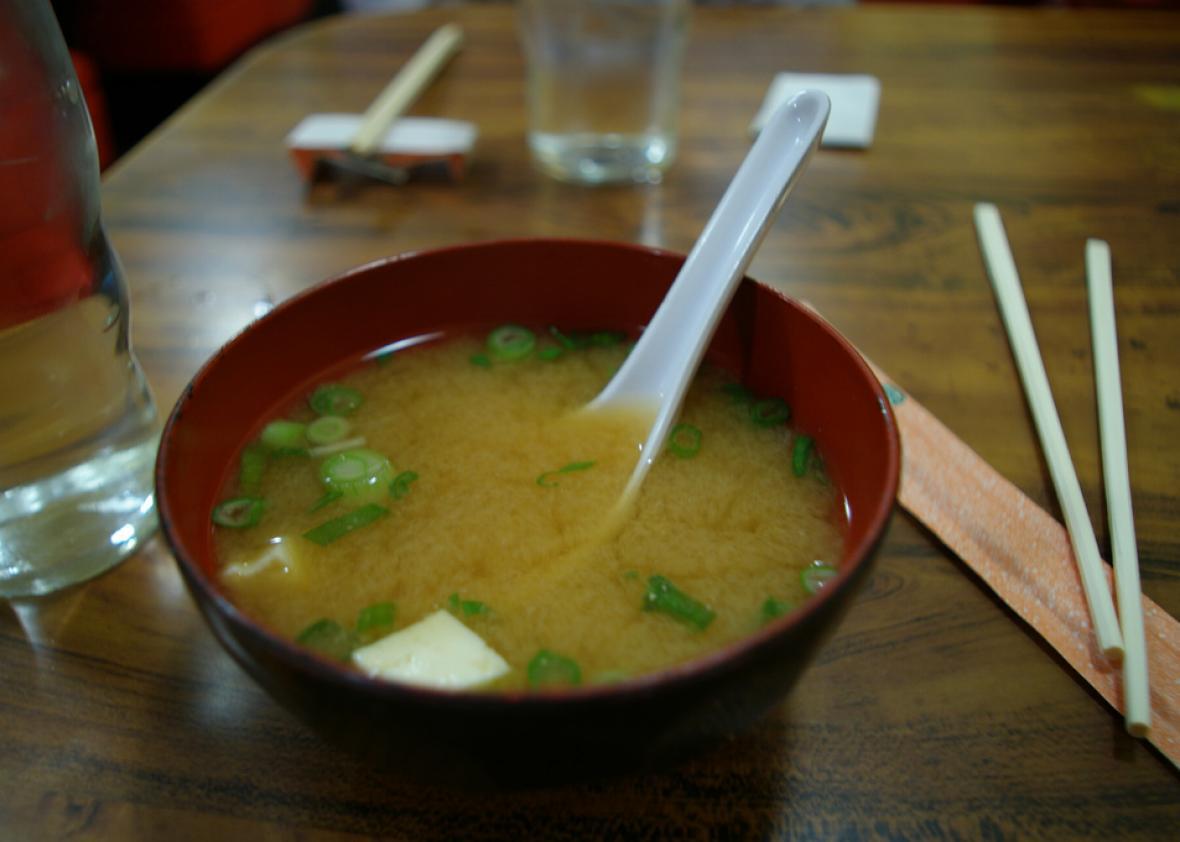This question originally appeared on Quora, the knowledge-sharing network where compelling questions are answered by people with unique insights. You can follow Quora on Twitter, Facebook, and Google Plus.
Answer by Kaz Matsune, founder, speaker, author, private sushi chef at Breakthrough Sushi:
There are many reasons to use a soup lid in Japanese cuisine, and many reasons why sushi restaurants in the United States may not use a lid. Here are a few ideas:
The lid keeps the soup hot and the dust out. Back in the olden days (i.e., 300-400 years ago) in Japan, the kitchen was far away from the dining area, so they used lids to keep the soup warm. The lid also kept the dust out while transporting the soup. At restaurants in the U.S., soup is served at the beginning of the meal, and it only takes a few seconds to transport, so there really is no need to use a lid to keep it warm. In a modern kitchen, there is no need to worry about keeping ashes from burning coal from the cooking fire out of the food, either.
In Japan, soup bowls with lids are for special occasions and special guests. Therefore, it’s customary to use a soup bowl without a lid for regular meals at home and at most restaurants in Japan. As such, if you were to go to a high-end restaurant like a Kaiseki restaurant, it’s likely that you will be served the soup with a lid. Personally, I’ve never been to a restaurant in the U.S. that served the soup with a lid. I’m sure there are some that choose to use a lid for more aesthetic reasons and to treat every customer as a special guest.
The lid increases the visual appeal and the surprise. Generally speaking, in Japan a soup bowl with a lid is for a clear dashi broth soup called osuimono and not for miso soup. It’s perfectly OK to serve miso soup with a lid, and many will do so in Japan. It is not really OK to serve osuimono in a miso soup bowl, though.
The reason is the element of surprise when a guest opens the lid to see the beautiful layout of the ingredients inside of the soup bowl. In osuimono, you can see all the ingredients in the clear broth sitting at the bottom of the bowl, beautifully laid out. With miso soup, it’s difficult to see the bottom of the bowl.
Just like the aroma, the Japanese value the visual presentation of their food. There is a saying: “You eat with your eyes first.” There are some decorations both on the outside of the bowl and inside the lid, and they are to be praised and enjoyed just as much as the food.
Again, unless the meal is for a special guest or a special occasion, there may be no need to use a bowl with a lid, especially lacquerware soup bowls with decorations, which are relatively expensive. Also, just like with a Japanese tea ceremony, I’d guess that many people in the U.S. are unfamiliar with this practice. Therefore, many restaurants feel no need to spend extra money for the decorated soup bowls.
Opening the lid releases the aroma. What we think of as flavor is a combination of taste and aroma. Although there are only five tastes, according to a recent study, a human can smell almost an infinite number of combinations of aroma. While the exact number of combinations of aroma a human can detect is up for debate, the Japanese understand the importance of aroma in their cuisine. The lid on a soup bowl keeps the aroma in the bowl and releases it when opened. With miso soup, it’s difficult to smell the subtle aroma of ingredients, whereas with dashi broth like in osuimono, the aroma of miso is dominant. Thus, many Japanese chefs may think it unnecessary to use a lid for miso soup.
Why is miso soup served without a lid in the U.S.? originally appeared on Quora. More questions on Quora:
